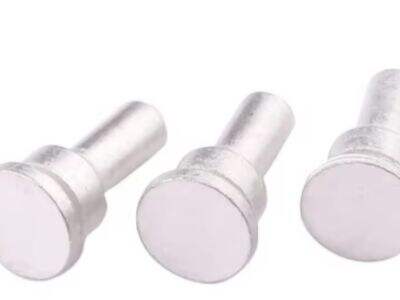When we think about cars, what comes to our minds is their shining outer body, their comfortable interior and their driving. Cars are fantastic machines, but you know what really holds the whole car together? That's right, it's bolts! Bolts are really essential when it comes to cars and other vehicles. Without bolts, the cars wouldn't hold together and might fall apart. Two days, today we will go through every automotive bolt but all different types used in cars.
Choosing the Correct Bolt
Now that we have an understanding of how important bolts are, let's move on and discuss how to choose the right one for your job. To put it succinctly: there are different types of toggle bolts for different jobs, and you want to select the correct bolt for whatever it is you're trying to do. DG Guyi DGA: DGA is a familiar term due to the types of car bolting. Understanding what each kind of bolt is capable of will alert you to the right choice for your vehicle, it also helps to keep everything secure.
Guide to Car Bolts
There are a lot of different bolts, but in this case, we are going to be focusing on what you will use most often when servicing or repairing vehicles.
Hex Bolts: Hex bolts get their name from their shape. They have hexagonal heads, which means they have six sides. This special shape allows you to use a wrench for effortless tightening. Hex bolts are very strong and are typically utilized in connecting large components, such as engine components, suspension parts and body panels of the vehicle.
Flange Bolts: Flange bolts are a little bit like hex bolts but they have a wider surface. The additional thickness allows for even pressure distribution around the circumference when the bolt is torqued. Reason the flange bolts are suitable for the applications which demand strong, safe fastening, in both the exhaust systems and the engine blocks, where security is crucial.
Carriage Bolts-These black bolts contain a rounded head and square base directly beneath the head to guide the action of the bolt as tightened from becoming a turner. Carriage bolts are largely used in wooden work, yet they can be reused within cars to bind body panels together or hold seats inside. They may also be placed in locations with view where people will behold them because they are beautifying to look at.
Stud Bolts: Stud bolts are slightly different from the rest. They have threads on the ends, meaning they can be used to clamp components firmly in place. Stud bolts are commonly used in exhaust systems and suspension components where they help to keep things tight.
Understanding Bolt Functions
Having discussed the different types of automotive bolts, the question now is what do they do, and why are they useful? Hex bolts are ideal for joining large components due to their ability to create a stompier, more secure hold. It is because of this reason that they are utilized in numerous critical systems of a vehicle.
Flange bolts distribute pressure evenly to ensure uniform application of force; they are quite essential where pressure is more, like application in an engine block. This means that they are way less likely to break themselves or come loose when they are used.
Because they look nice, carriage bolts are commonly used where they will be visible. They also have applications that require a flush mount, meaning they are sitting flat on the surface. At last, stud bolts are used to hold parts in place. They typically have a nut on either side, holding everything together nice and tight.




